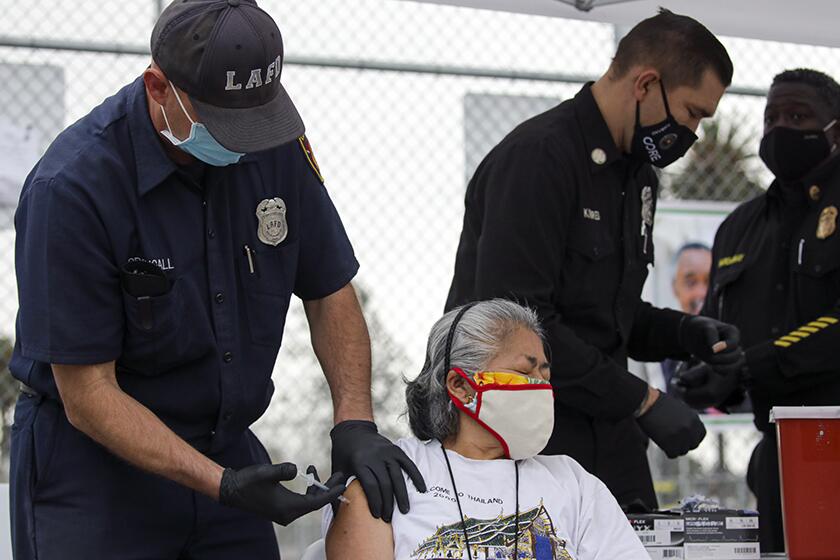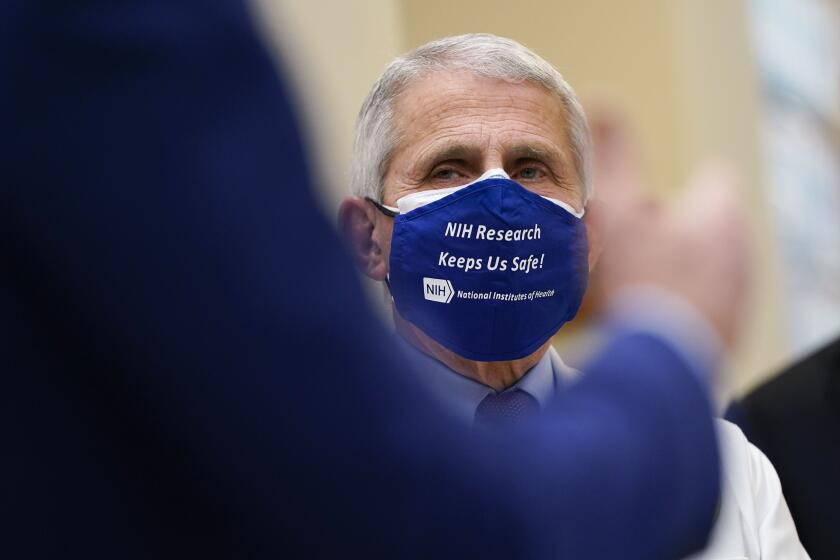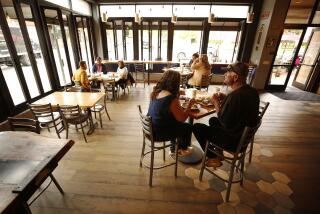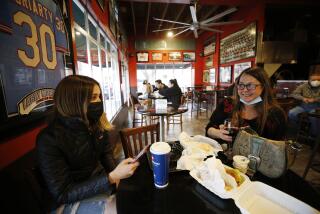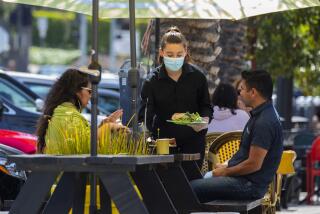More California restaurants, cinemas, gyms could reopen this week as COVID-19 cases drop
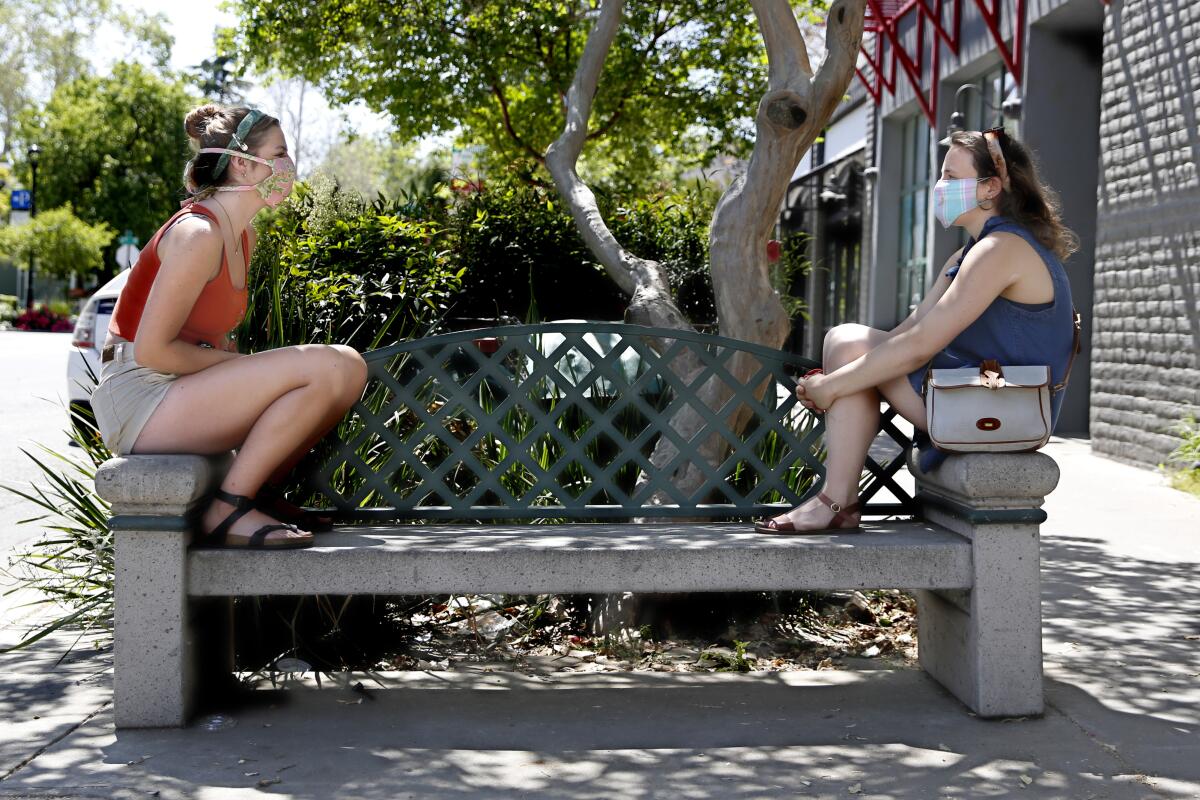
- Share via
SAN FRANCISCO — With coronavirus cases continuing to drop, more parts of California are being allowed to reopen in the coming days.
Five counties will be eligible to open indoor operations at restaurant dining rooms, gyms, movie theaters, museums, zoos, and aquariums Wednesday amid a dramatic improvement in the COVID-19 pandemic, Gov. Gavin Newsom said Tuesday.
Among the counties eligible to leave the most restrictive purple tier on Wednesday are San Mateo and Marin counties in the Bay Area; Yolo County, west of Sacramento and home to UC Davis; and Shasta and Humboldt counties farther north. Counties are allowed to retain stricter rules than required by the state.
An additional seven California counties could be eligible to leave the state’s most restrictive tier next week — Santa Clara, San Francisco, San Luis Obispo, El Dorado, Napa, Lassen and Modoc counties. An eighth county, Sierra County, could be eligible to leave the state’s second-least restrictive tier, orange, to enter the least restrictive tier, yellow, next week.
Until this week, only six counties — all sparsely populated areas in Northern California — were not in the state’s most restrictive tier: Alpine, Del Norte, Mariposa, Plumas, Sierra and Trinity. Trinity County, which has been in the second-least restrictive tier, the orange tier, suffered a setback and will slide into the second-most restrictive, or red, tier.
In L.A., so many people now have immunity to the coronavirus from past infections and vaccination that transmission is slowing and inching toward herd immunity.
Counties in the second-most restrictive red tier can reopen indoor restaurant dining rooms and movie theaters with up to 25% capacity or 100 people, whichever is fewer. Gyms and dance and yoga studios can open at 10% capacity. Museums, zoos and aquariums can open indoor activities at 25% capacity. Stores, indoor malls and libraries can open at 50% capacity, an increase from the most-restrictive tier, in which nonessential stores could open at 25% capacity.
Food courts can also reopen in indoor malls in counties in the red tier but must be at a reduced capacity. In the red tier, higher-education institutions can hold indoor lectures and student gatherings, but are limited to 25% capacity or 100 people, whichever is fewer. In the purple tier, indoor lectures and student gatherings are prohibited.
In San Mateo County, officials celebrated the transition into the red tier.
“This is great news for our small businesses and our entire community,” San Mateo County supervisor David J. Canepa said in a statement. “And this move is a direct result of all of us taking personal responsibility for our actions. If we wear our damn masks, keep our distance and follow common-sense health and safety protocols, we can get back to doing what we all love to do.”
Southern California was hit much harder by the winter wave than other parts of the state, so reopenings are likely going to be slower there, officials have said.
Still, many pandemic indicators continue to dramatically improve. California is recording about 7,000 new coronavirus cases a day now, down from 45,000 a day from six weeks ago. The number of COVID-19 patients in California’s hospitals on Sunday was 6,569, down from a high of 21,936 recorded on Jan. 6.
The number of people in intensive care units statewide was 1,933 on Sunday, down 60% from its peak of 4,868 on Jan. 10 and at its lowest number since Dec. 1.
California is recording 327 new COVID-19 deaths a day over the past week, down from the peak of 562 deaths a day recorded for the week that ended Jan. 27.
The rate at which coronavirus tests are coming back positive is also consistently declining, data show. The so-called positivity rate over a seven-day period hit a peak of 14.3% on Jan. 7 — the highest number since the first weeks of the pandemic last year — and has fallen to 3.1%, a figure not seen since Nov. 1.
Dr. Anthony Fauci, the nation’s coronavirus czar, says it’s possible masks could be needed for another year.
While health officials have cheered the state’s collective progress, they’ve continued to warn that California isn’t out of the woods yet — and that adherence to infection-prevention protocols such as wearing masks in public and avoiding crowded settings, particularly indoors, remains a must.
“These numbers continuing to decrease is not a given,” Los Angeles County Public Health Director Barbara Ferrer said last week. “This will only continue if we’re all in the game and we’re all using the tools we have at hand.”
Lin wrote from San Francisco and Smith from Los Angeles. Times staff writer Luke Money contributed to this report.
More to Read
Sign up for Essential California
The most important California stories and recommendations in your inbox every morning.
You may occasionally receive promotional content from the Los Angeles Times.
